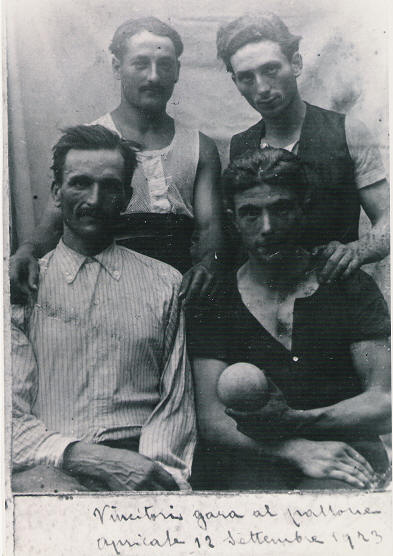|
Pallapugno
in Apricale.
Translated from german by Martin Eimer, Original
by Alessandro Giacobbe
Pallapugno is a
traditional game with roots in antiquity. It is a team
competition that was originally a pastime in ancient Rome. Since
medieval times, it has changed from a game that was played after
work to a professional team sport. The ball was made of leather
and was very heavy. Players protected the hand with a wooden
bracelet. The competition was staged along city walls, castle
walls and other appropriate places. The most famous venues in
Macerata and Cascine di Firenze are still being used today. The
game was popular throughout Italy. Bets were placed, and
professional players earned more than footballers.
Nowadays, the
ball is made of rubber and much lighter. Players protect their
hand with bandages (which are never washed) and pieces of
leather. The game is now most popular in rural areas. People
play the game on festive days and after mass. Local variations
have been developed, while “english” games such as football are
primarily played in larger towns and cities.
Pallapugno is
played primarily in the most traditionally-minded areas of
Liguria and Piemont. There are official competitions in four
categories, and also youth tournaments. The game played after
work has now developed into a serious sport that is played by
professionals and semi-professionals. Tournaments are held for
different variants of the game. In Apricale, Pallapugno is a
fixture during the summer months, and attracts famous champions
who want to play here. The Piazza isn’t big enough? Well, then
let’s just play on two levels, between the municipal house and
the street below the castle. It is difficult to comprehend the
rules of the game. Walls, stairs, vaults are all traps for the
ball which races between the stones like a mad cat. Those who do
not know the game do not understand a lot, but can still see in
the spectators’ faces their passion and knowledge, and also the
cat-like skill of the players. Movements worthy of being carved
in marble, according to Goethe who
watched this sport during his long visits to italy |

Top right Fortunato Buscaglia from
Apricale with friends
|